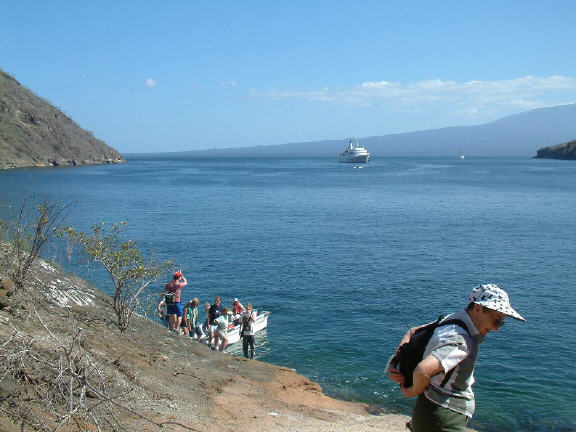
The afternoon excursion was at Tagus Cove on the island of Isabela. This was a dry landing in a cove that has been used by sailors for centuries.
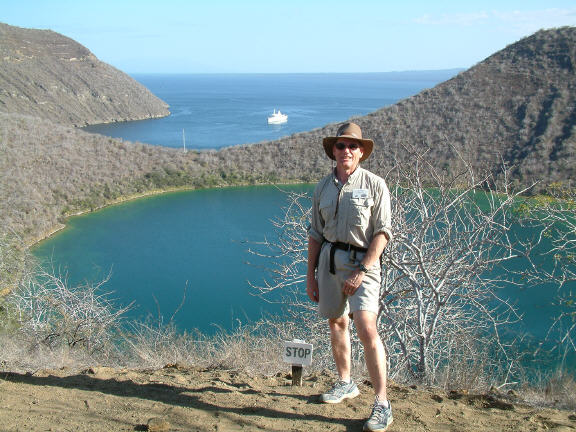
Darwin Lake is a small lagoon in a crater very near Tagus Cove that was probably formed by a tidal wave when a volcano on nearby Fernandina Island erupted. (You can see Fernandina in the distance.) The lake is just slightly above sea level and is twice as salty as sea water. Evaporation is counteracted by the porous nature of the rocks dividing the sea from the water in the crater. The sea water seeps in slowly, replenishing what was lost by evaporation.
The white line at the water's edge is salt encrustation.
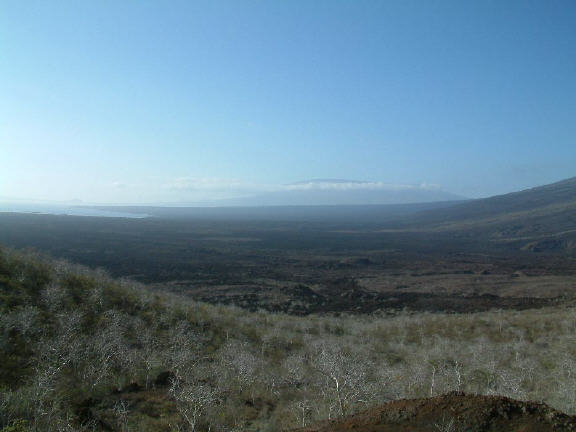
We had about a two-hour walk uphill to a point that provided a great view of the northern half of Isabela, including the two northernmost volcanoes
I love this picture because it shows several interesting things. Note the barren landscape, nothing but a stark lava field, coming down from Darwin Volcano. You can also see how dead the Palo Santo trees appear in dry season.
In the distance is Wolf Volcano (the highest point in the Galapagos Islands) with the cloud layer on its south side. You can see the barren lava field coming down from the volcanoes, with the sea out in the distance. Almost all rainfall happens on the southern sides of the slopes. Moisture comes over the sea, up the slopes, condenses, forms clouds, and falls as rain. By the time it gets to the northern side all the moisture is gone so the northern slope is pretty barren.
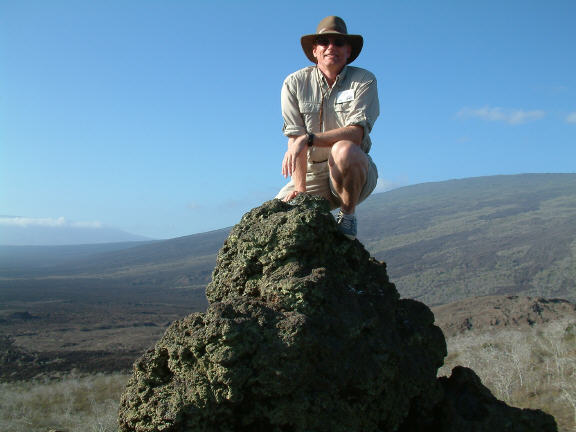
At the peak, we took turns photographing each other. This is one of Sue's very favorite photos of our trip.
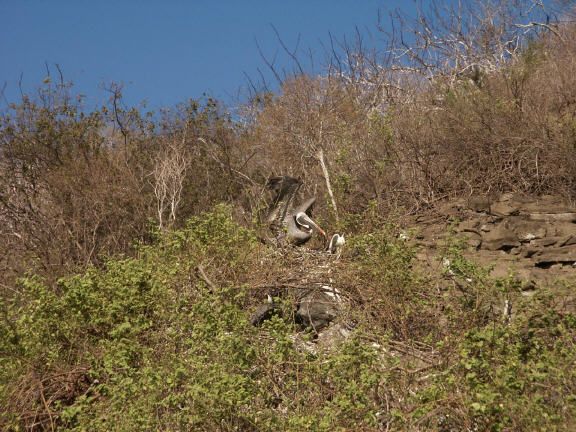
After descending back down, we got in dinghies for a tour along the shoreline of Tagus Cove. We were immediately treated to the sight of pelicans landing and taking off from their nests.
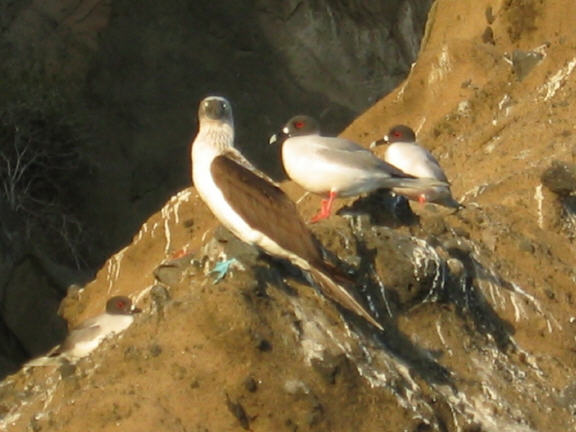
We saw blue-footed boobies and swallow-tailed gulls (the hooded bird with the red feet). These gulls, found only in the Galapagos, are the only nocturnal gulls in the world--they feed at night.
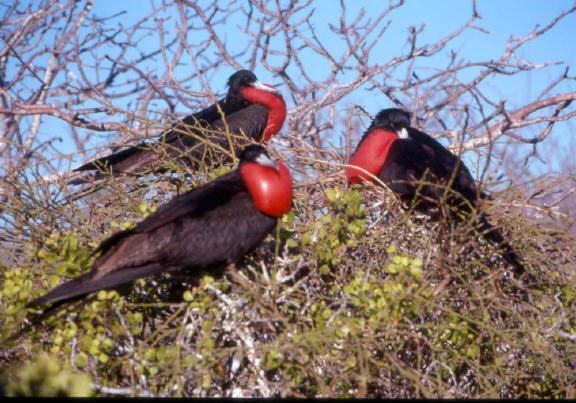
During this excursion, Sue went on another dinghy ride in Tagus Cove. She shook her head as she told herself, "This is not a video! This is no TV program on the Travel Channel! This isn't even a zoo, this is the real thing and God made it all!"
They saw many blue-footed boobies and a few up-close frigate birds as the dinghy pilot took the boat within a few feet of the cliff walls. The male frigate has a bright red chest pouch that he puffs up with air to attract female birds. Even from the air, the impressively red chest is plainly seen on this large bird.
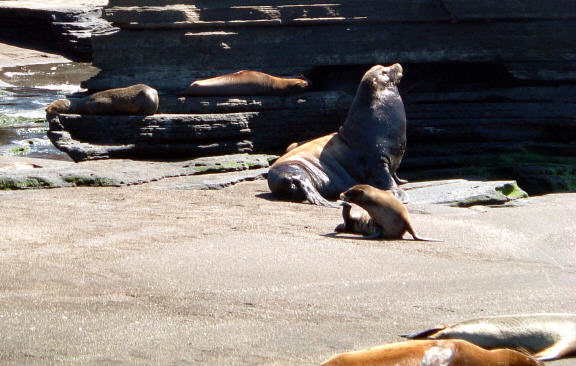
On this ride they saw a large number of sea lions sunning themselves on rocks. The guide pointed out that sea lions are very social. They are found in groups, one male and several females with their young. You can see the large bull with his "harem" here.
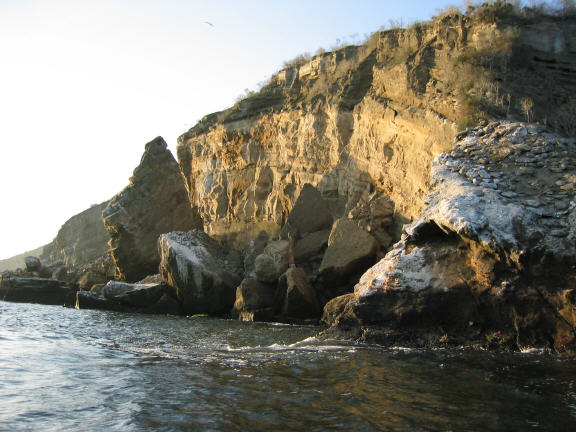
A gorgeous sight--late afternoon sun drenching the rocks.